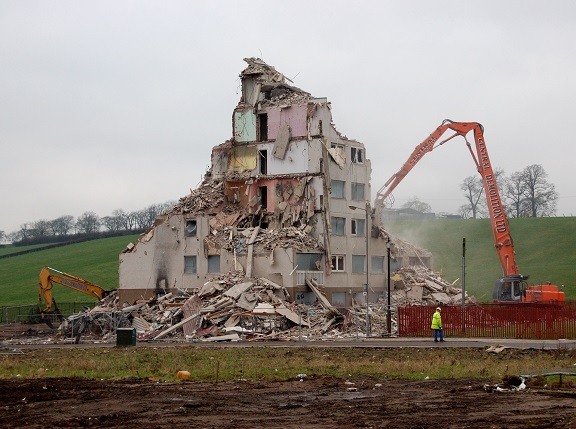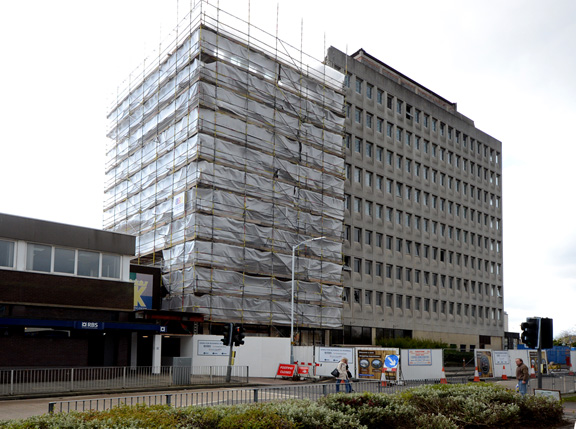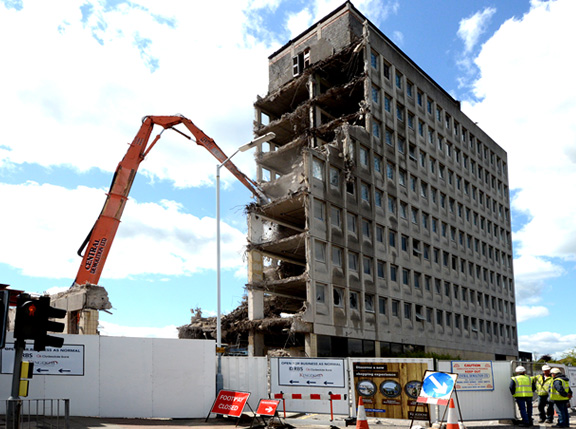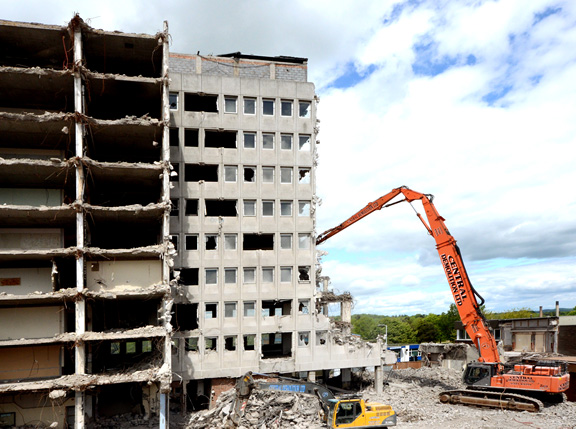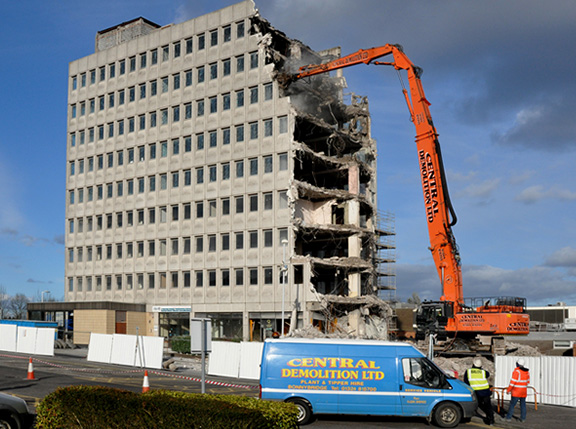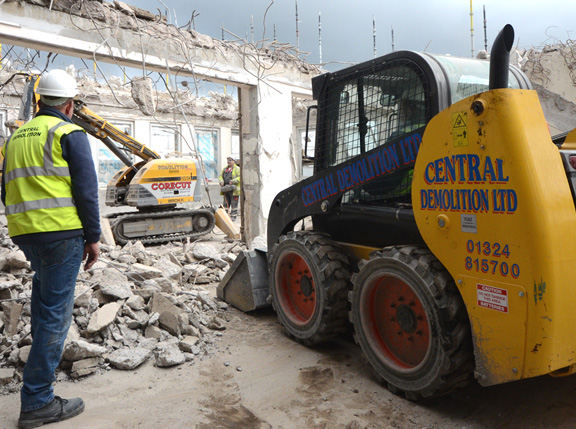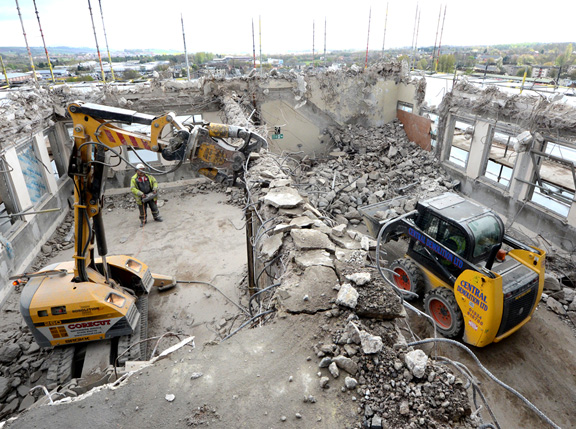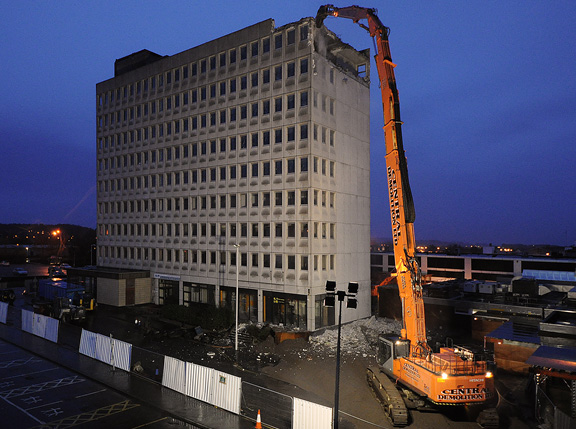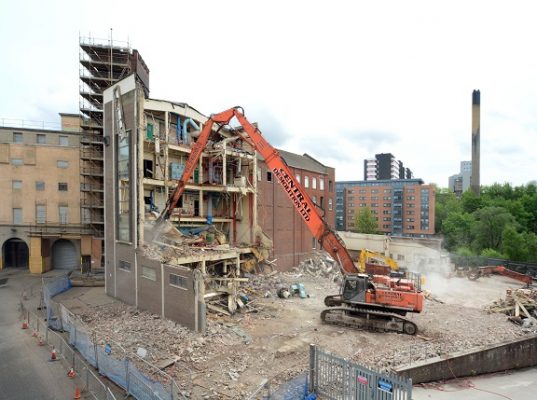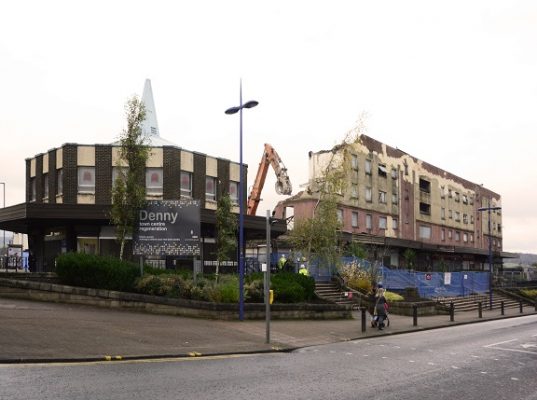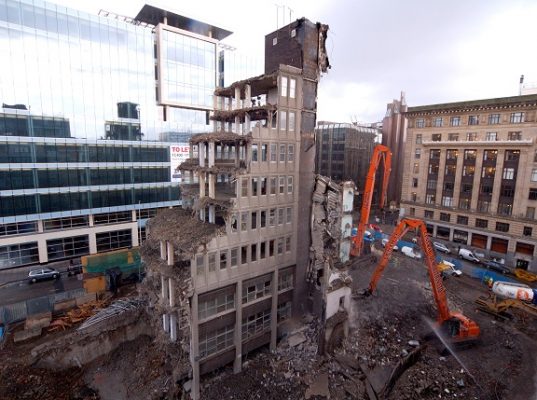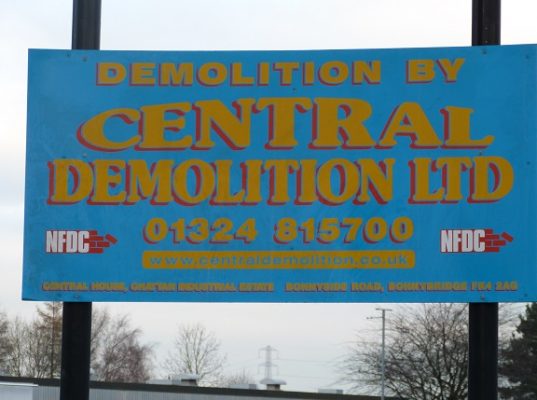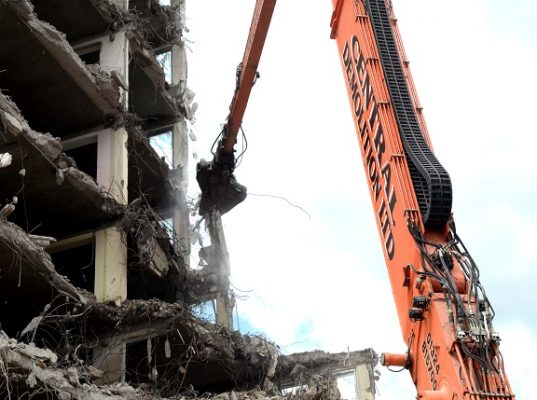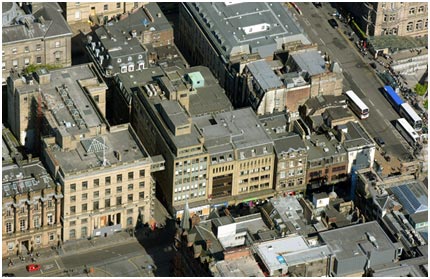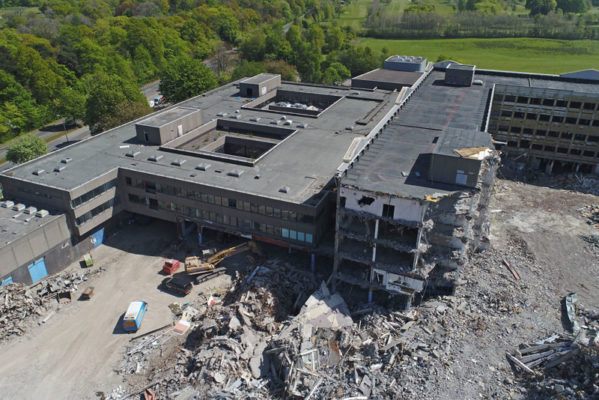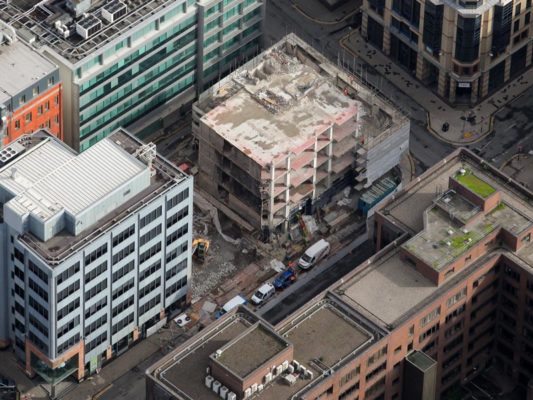Central Demolition Limited were awarded the contract for the demolition of Glenrothes House, an existing 9 storey office building situated amidst a busy town centre environment.
A lot of pre-preparatory works were required before the demolition works began. All services were disconnected prior to commencement and all stakeholders were made aware of restrictions and procedures in place for the duration of the works. Prior to commencement of any works, all operatives were fully inducted.
The initial set-up of the site involved the erection of pedestrian walkways and the excavation and removal of the courtyard area. Our asbestos operatives then removed all notifiable asbestos, and as this operation continued the soft stripping of the offices, Clydesdale Bank and the linked corridor to The Royal Bank of Scotland offices commenced. Meanwhile, the removal of non-notifiable asbestos got underway.
A single demolition method was deemed inappropriate for this project, and so a mixture of hand separation, machine demolition and robotic demolition was undertaken. The machine demolition was carried out using a Hitachi EX850 hydraulic 360 degree excavator type demolition machine complete with falling objects protection system (F.O.P.S) and fitted with 40 metre super high reach boom and 360 degree hydraulic concrete cruncher attachment to ensure only small pieces fell during the works. The robotic demolition was carried out by specialist contractor Core Cut Limited.
We were also contracted to carry out additional works, which included the soft strip and partial demolition of a two storey link bridge, and the demolition of the remaining section of the reinforced concrete link bridge structure.
The location of the site created challenges. The proximity of the building to a main road created the need for a traffic management plan to be put in place – and this included a lane closure to create a safe exclusion zone. As the building was situated within a busy town centre, access to the surrounding offices and shops had to be maintained. A safe route for pedestrians was created through the construction of a pedestrian tunnel. All of these implemented actions allowed for minimal disruption. We did carry out some night-time works so that the offices and shops could remain fully operational.
This project carried many risks, especially since the site was bordered with public roads, other offices, shops and pedestrian walkways. As with every job, we had a comprehensive health and safety plan in place in order to minimise the effects of our works on our employees, our clients, neighbouring businesses and the general public. Operatives were always supervised and they wore safety boots, hats and high visibility vests at all times, together with goggles, dust masks and ear defenders where appropriate.
The project was successful and was completed safely, on time and within budget. We managed to keep disruption to a minimum for the duration of the works.
